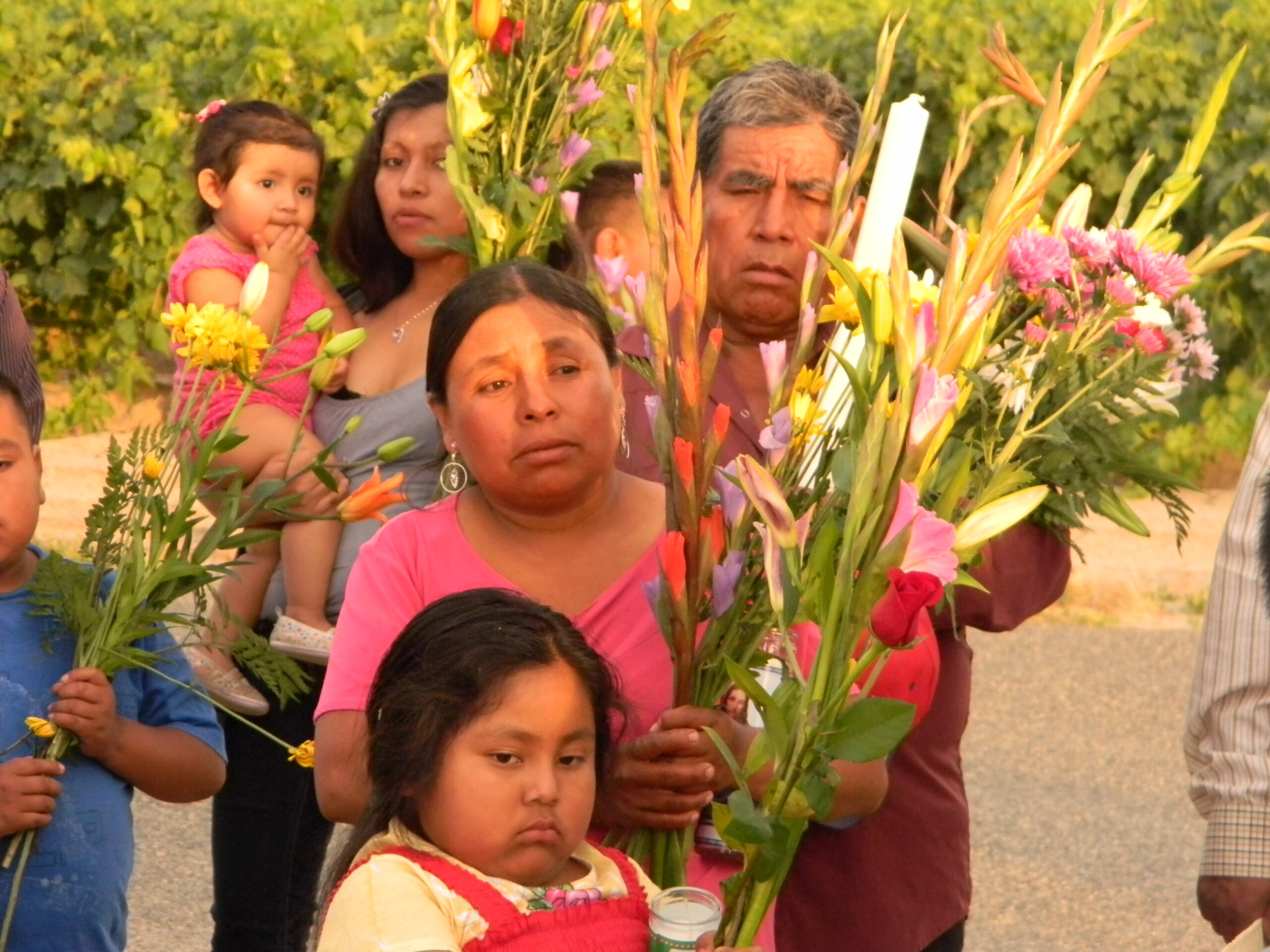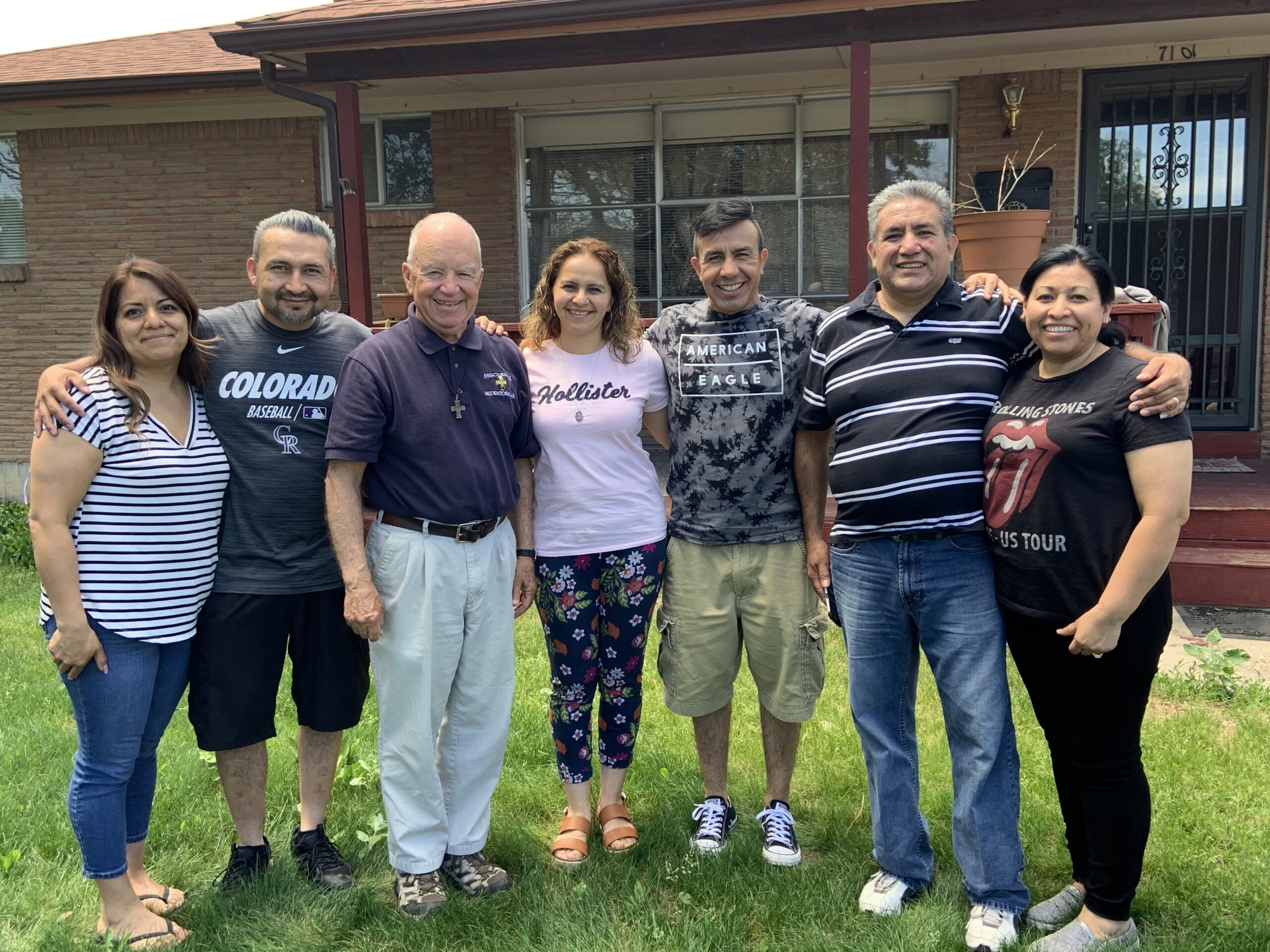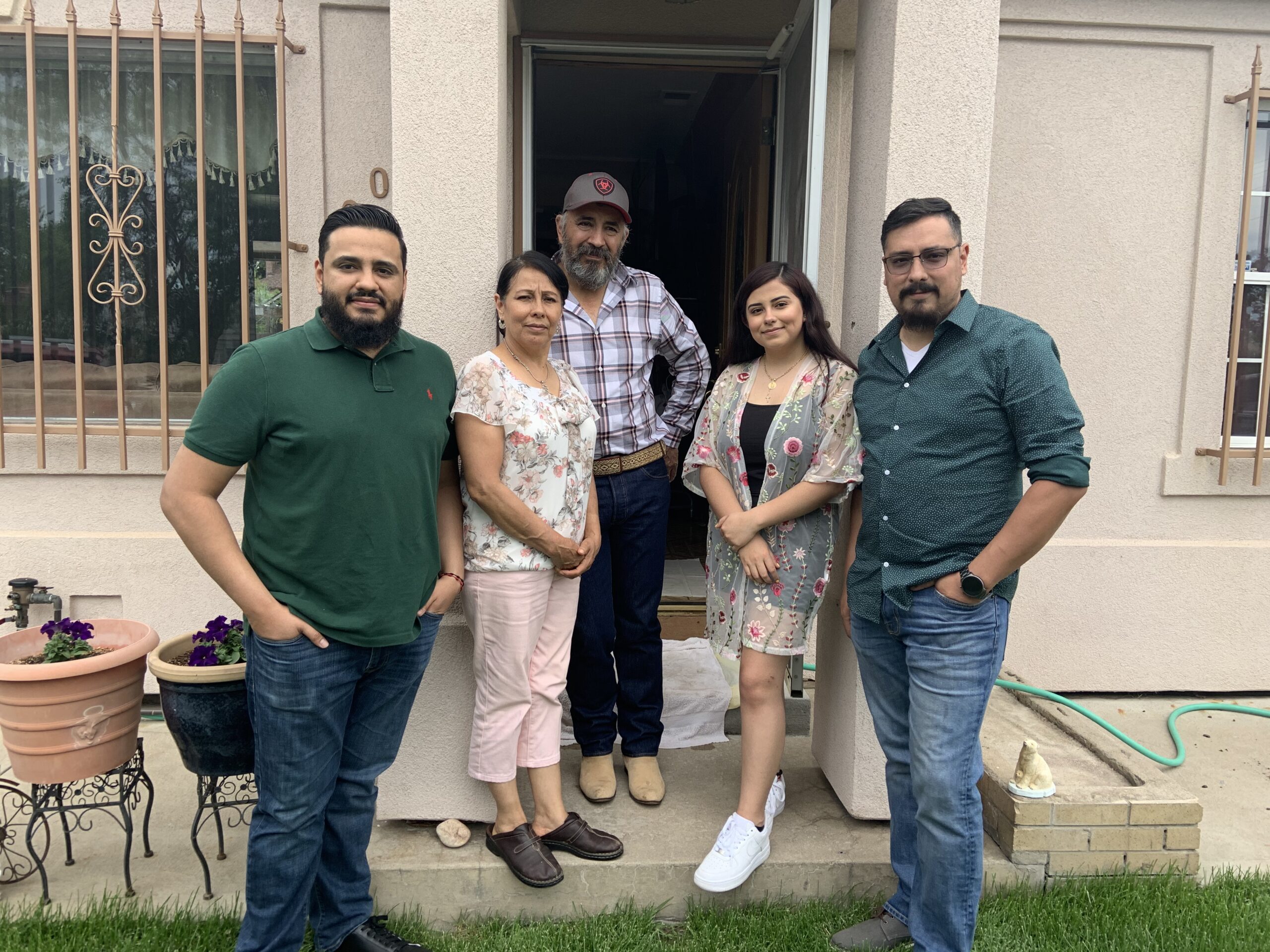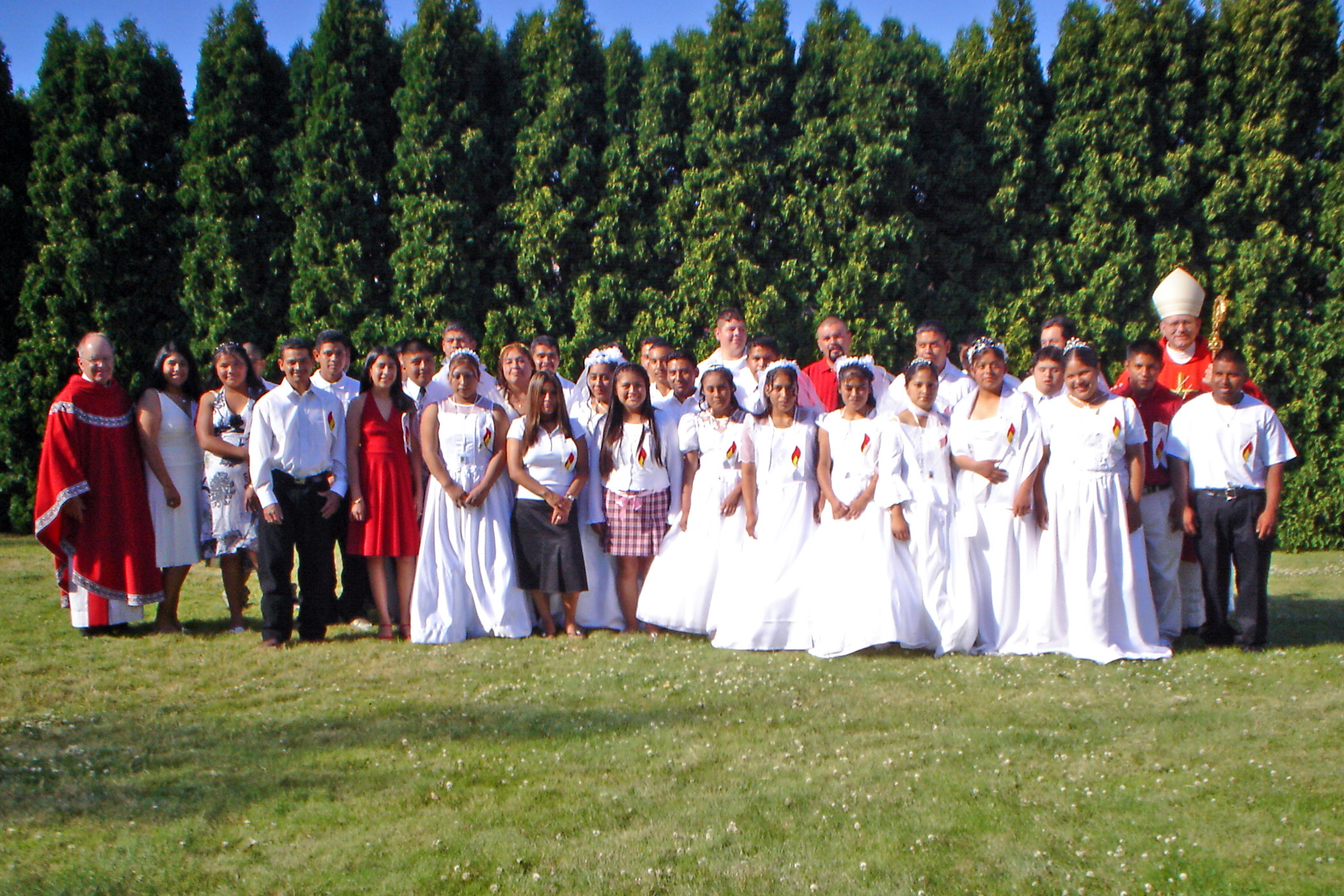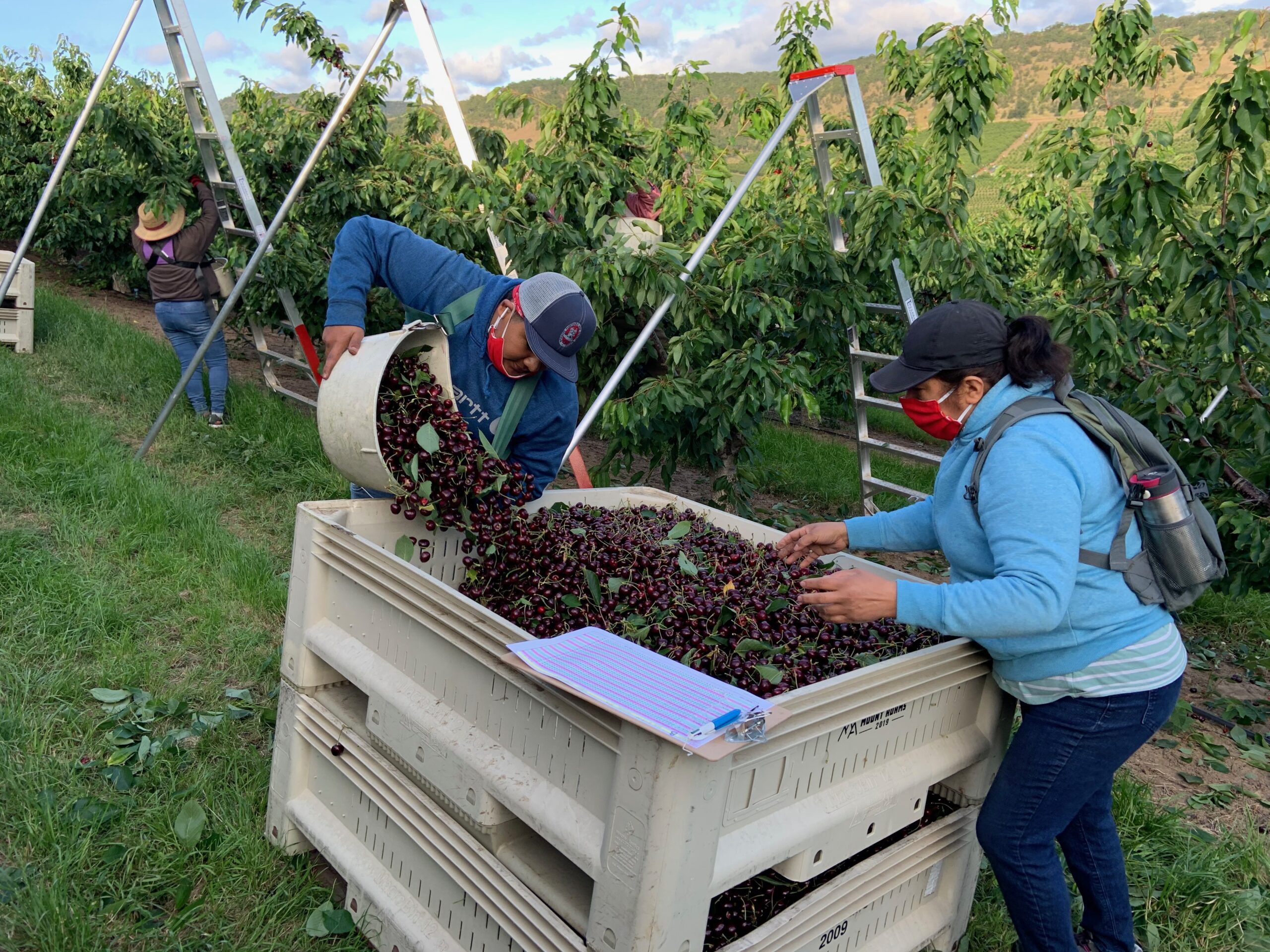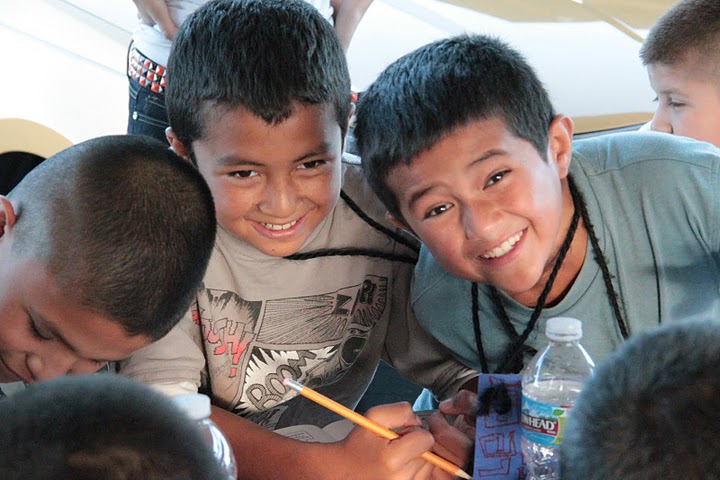Eucharist today: St. Juan Diego, Example for RCIA / San Juan Diego, ejemplo para RICA
St. Juan Diego, Example for RCIA
The Rite of Christian Initiation for Adult welcome converts to the life of the Church. After the candidate receives the sacraments of Baptism, Confirmation and Eucharist, they are encouraged to enter continuing education in the faith called mystagogia. Soon we will be celebrating the Feast of Our Lady of Guadalupe, and as we prepare for the celebration, we welcome the opportunity to remember Juan Diego’s role in the feast. I like to call attention to Juan Diego as a model for the recent convert in the Catholic faith.
An indigenous man experienced the evangelization of the Friars in Mexico City. He took the names of the Apostles, John and James. As a new convert he wanted to know more about the faith, and his practice was to walk nine miles to Mexico on Saturdays, staying for the teaching of the Friars, and return to his home on Sunday after participating in Mass. It is the poem in Nahuatl, the Nican Mopohua that tells us the story of Juan Diego becoming the messenger of the Virgin. Note how reflective he is on his walk to Mexico.
NICAN MOPOHUA (“HERE WE RECOUNT”) in an orderly way how the ever Virgin Holy Mary, Mother of God, our Queen, appeared recently in a marvelous way at Tepeyac, which is called Guadalupe.
First she allowed herself to seen by a poor and dignified person whose name is Juan Diego; and then her precious image appeared in the presence of the new Bishop Don Fray Juan de Zumárraga.
1 Ten years after the City of Mexico was conquered, with arrows and shields put aside, when there was peace in all the towns, 2 just as it began, faith now grows green, now opens its flower, the knowledge of the One by whom we all live: the true God, Téotl. 3 At that time, the year 1531, a few days into the month of December, it happened that there was a humble but respected Indian, a poor man of the people; 4 his name was Juan Diego; he lived in Cuauhtitlán, as they say. 5 and in all the things of God, he belonged to Tlaltilolco.
6 It was Saturday, not yet dawn; he was coming in pursuit of God and his commandments. 7 And as he drew near the little hill called Tepeyac it was beginning to dawn. 8 He heard singing on the little hill, like the song of many precious birds; when their voices would stop, it was as if the hill were answering them; extremely soft and delightful, their songs exceeded the songs of the coyoltotl and the tzinitzcan and other precious birds.
9 Juan Diego stopped to look. He said to himself: “By any chance am I worthy, have I deserved what I hear? Perhaps I am only dreaming it? Perhaps I’m only dozing? 10 Where am I? Where do I find myself? Is it possible that I am in the place our ancient ancestors, our grandparents, told about, in the land of the flowers, in the land of corn, of our flesh, of our sustenance, possibly in the land of heaven?”
11 He was looking up toward the top of the hill, toward the direction the sun rises from, toward where the precious heavenly song was coming from. 12 And then when the singing suddenly stopped, when it could no longer be heard, he heard someone calling him, from the top of the hill, someone was saying to him: “JUANTZIN, JUAN DIEGOTZIN.”
As Juan Diego walks, he enjoys the singing of the birds, and as he recognizes the beauty of creation around him, he considers the faith of his ancestors who believe that this area was the home of the gods of his people. As he considers his desire to know more about the God of his Catholic faith, he hears the voice calling out to him, “Juantzin, Juan Diegotzin.” Often this is translated in Spanish, “Juanito, Juan Dieguito.” The “ito” is a term of caring, often used by parents for their child. The “tzin” is more than a term of caring. It is a term of respect. Juan Diego hears, “My noble Juan, my dignified Juan, my chosen Juan.”
During the rest of the story, Juan Diego grows in his faith, from being a recent convert to becoming the messenger of the Virgin and at the end of the story, he has gone from being the person evangelized to becoming the evangelizer. As he told and re-told the story, the nation of Mexico became the most Catholic nation in the world within one century. He truly is the model of the recent convert committed to the mission of the faith.
(Tomorrow: Quality migrant ministry inspires ordinary ministry)
San Juan Diego, ejemplo para RICA
El Rito de Iniciación Cristiana para Adultos da la bienvenida a los convertidos a la vida de la Iglesia. Después de que el candidato recibe los sacramentos del Bautismo, la Confirmación y la Eucaristía, se le anima a ingresar a la educación continua en la fe llamada mistagógica. Pronto vamos a celebrar la Fiesta de Nuestra Señora de Guadalupe, y mientras nos preparamos para la celebración, damos la bienvenida a la oportunidad de recordar el papel de Juan Diego en la fiesta. Pongo atención a Juan Diego como modelo para el recién convertido en la fe católica.
Un indígena vivió la evangelización de los frailes en la Ciudad de México. Tomó los nombres de los apóstoles, Juan y Santiago. Como nuevo convertido quería saber más de la fe, y su práctica era caminar nueve millas hasta México los sábados, quedarse para la enseñanza de los frailes, y regresar a su casa el domingo después de participar en la misa. Es el poema en Náhuatl, el Nican Mopohua que nos cuenta la historia de Juan Diego convirtiéndose en mensajero de la Virgen. Note lo pensivo que es en su caminata a México.
AQUÍ SE CUENTA, se ordena, cómo hace poco, milagrosamente se apareció la perfecta virgen santa María Madre de Dios, nuestra reina, allá en el Tepeyac, de renombre Guadalupe.
Primero se hizo ver de un indito, su nombre Juan Diego; y después se apareció su Preciosa Imagen delante del reciente Obispo Don Fray Juan de Zumárraga.
1. Diez años después de conquistada la Ciudad de México, cuando ya estaban depuestas las flechas, los escudos, cuando por todas partes había paz en los pueblos, 2. así como brotó ya verdece, ya abre su corola la fe, el conocimiento de Aquel por quien se vive: el verdadero Dios. 3. En aquella sazón, el año 1531, a los pocos días del mes de diciembre, sucedió que había un indito, un pobre hombre del pueblo, 4. su nombre era Juan Diego, según se dice, vecino de Cuauhtitlan, 5. y en las cosas de Dios, en todo pertenecía a Tlatilolco.
6. Era sábado, muy de madrugada, venía en pos de Dios y de sus mandatos. 7. Y al llegar cerca del cerrito llamado Tepeyac ya amanecía. 8. Oyó cantar sobre el cerrito, como el canto de muchos pájaros finos; al cesar sus voces, como que les respondía el cerro, sobremanera suaves, deleitosos, sus cantos sobrepujaban al del coyoltototl y del tzinitzcan y al de otros pájaros finos.
9. Se detuvo a ver Juan Diego. Se dijo: ¿Por ventura soy digno, soy merecedor de lo que oigo? ¿Quizá no más lo estoy soñando? ¿Quizá solamente lo veo como entre sueños? 10. ¿Dónde estoy? ¿Dónde me veo? ¿Acaso allá donde dejaron dicho los antiguos nuestros antepasados, nuestros abuelos: en la tierra de las flores, en la tierra del maíz, de nuestra carne, de nuestro sustento; acaso en la tierra celestial?
11. Hacia allá estaba viendo, arriba del cerrillo, del lado de donde sale el sol, de donde procedía el precioso canto celestial. 12. Y cuando cesó de pronto el canto, cuando dejó de oírse, entonces oyó que lo llamaban, de arriba del cerrillo, le decían: “Juanitzín, Juan Diegotzín”.
Mientras Juan Diego camina, disfruta del canto de los pájaros, y al reconocer la belleza de la creación que lo rodea, considera la fe de sus antepasados que creen que esta zona fue el hogar de los dioses de su pueblo. Mientras considera su deseo de saber más sobre el Dios de su fe católica, escucha la voz que le llama: “Juantzin, Juan Diegotzin”. A menudo esto se traduce al español, “Juanito, Juan Dieguito”. El “ito” es un término de cuidado, que los padres suelen utilizar para sus hijos. El “tzin” es más que un término de cariño. Es un término de respeto. Juan Diego escucha: “Mi noble Juan, mi digno Juan, mi elegido Juan”.
Durante el resto de la historia, Juan Diego crece en su fe, de ser un recién convertido a convertirse en mensajero de la Virgen y al final de la historia, ha pasado de ser la persona evangelizada a convertirse en evangelizador. Mientras contaba y volvía a contar la historia, la nación de México se convirtió en la nación más católica del mundo en un siglo. Verdaderamente es el modelo del converso reciente comprometido con la misión de la fe.
(Mañana: un ministerio migrante de calidad inspira al ministerio ordinario)
Here are ten themes to be covered considering participation in the Eucharist today:
- Role of the Eucharist in my own personal vocation story
- Benefits of celebration of Eucharist where migrants gather
- Exposure of obstacles to reception of First Eucharis that migrants experience
- Bishop John Steinbock’s reflection at Fresno Convocation of Clergy, 2010
- “You only have the time that God gives you”
- Responsibility of the priest to make the word and the sacramental presence of Christ present for the People of God
- Remember that the sacraments of Baptism, Confirmation and Eucharist are sacraments of initiation
- Involve the parents in the sacramental preparation of children
- The place of Mystagogia, continuing education and spiritual development
- Quality migrant ministry can inspire the ordinary ministry of our communities
Aquí hay diez temas considerando participación en la eucaristía hoy:
- Papel de la Eucaristía en mi propia historia vocacional personal
- Beneficios de la celebración de la Eucaristía donde se reúnen los migrantes
- Exposición de obstáculos a la recepción de la Primera Comunión que experimentan los migrantes
- Reflexión del obispo John Steinbock en Fresno Convocación de los Cleros, 2010
- “Solo tienes el tiempo que Dios te da”
- Responsabilidad del sacerdote de hacer presente la palabra y la presencia sacramental de Cristo para el Pueblo de Dios
- Recuerde que los sacramentos del Bautismo, la Confirmación y la Eucaristía son sacramentos de iniciación.
- Involucrar a los padres en la preparación sacramental de los niños.
- El lugar de mystagogia, educación continua y desarrollo espiritual
- Un ministerio migrante de calidad puede inspirar el ministerio ordinario de nuestras comunidades.
